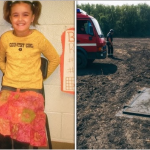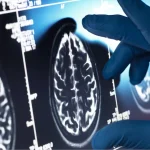The Generative Brain: Rethinking Memory as Creation, Not Retrieval
- KimLoan
- September 25, 2025

Related Videos:
For centuries, the human mind has clung to a comfortable, intuitive metaphor for memory: the mental filing cabinet or the video archive. We imagine our experiences—the face of a loved one, the smell of rain, the details of a past summer holiday—as being neatly recorded, stored in a specific location within the brain, waiting patiently to be retrieved and replayed. But according to cognitive scientist Elan Barenholtz, this foundational idea is profoundly wrong. He challenges us to embrace a far more dynamic and, frankly, more astonishing truth: memory isn’t retrieval—it’s generation.

The Illusion of the Mental Photo
Barenholtz argues there is no static, stored image of your mother or a past event patiently waiting to be pulled out of some neurological compartment. If you recall the moment you graduated high school, you aren’t pulling up a fixed ‘photo’ or ‘video file.’ Instead, that memory is constructed on the spot, an entirely fresh mental rendering built from scratch.

This act of real-time creation is shaped profoundly by the context and sensory input available at the time of remembering. Your brain uses past experiences, emotional associations, and cues—perhaps the current scent in the air or the sound of a certain song—to dynamically piece together the experience. When you “see” your mother’s face in your mind, your brain is not accessing a stored photo; it is actively creating it using its immense processing power.

The Dynamic Reality of Memory
This generative perspective means that memories are not static or “real” in the traditional sense of a physical object. They don’t have a fixed location that a complete brain scan could simply reveal, unless the exact neural process of generating it was replicated.
And yet, this model doesn’t diminish the reality of memory; it redefines it. Memories are real because your brain possesses the incredible ability to call them into existence whenever needed. This is revealed by the sheer flexibility of recall. Your brain can effortlessly recreate your mother’s face from different angles, in varying lighting conditions, or even in motion—something a simple stored photograph could never do. This capacity for creative adaptation reveals memory not as a passive storage unit, but as an immensely powerful, creative tool.

A New Focus for Learning
The generative theory of memory raises a crucial, practical question: If memory isn’t about storing information, but about the ability to reconstruct an experience, how can we ensure we’ll be able to successfully generate important memories in the future?

The focus shifts dramatically. We must move away from the mindset of “putting things into the brain” and toward designing the right conditions for successful reconstruction. Existing memory research—such as repetition, retrieval practice (testing yourself), and spaced learning—is still valuable because these practices essentially train the brain to build more robust and accessible neural pathways for reconstruction.
However, Barenholtz suggests a shift in mindset could unlock new possibilities. If educators and students stop thinking about cramming facts and start thinking about how to train the brain to rebuild those experiences and concepts from different angles and contexts, we might discover more effective ways to teach, study, and remember.

Ultimately, understanding memory as a dynamic, generative process offers a pathway to fundamentally reshape how we approach learning. It suggests that the goal isn’t just better recall of facts, but a deeper, more flexible understanding that allows us to creatively reconstruct knowledge and apply it in any new context we encounter. It turns the act of remembering into an act of creation.










